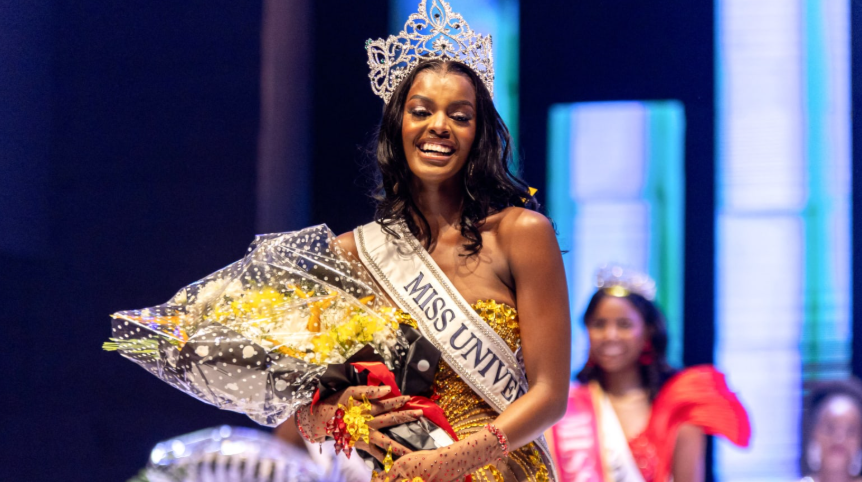
April 8th marks World Pageant Day, a celebration of the glitz, glamour, and global influence of beauty competitions.
For decades, these competitions have been platforms for women to showcase their confidence, advocate for causes, and represent their countries on a global stage.
But what makes a beauty pageant truly iconic? Is it the glitz and glamour? The fierce competition? Or the way these contests evolve with society?
The most prestigious pageants have rich histories, passionate fan bases, and significant media reach. Some prioritise traditional beauty standards, while others emphasise intelligence, talent, or activism.
From the high-stakes drama of Miss Universe to the humanitarian focus of Miss World, each competition has its own identity.
Let’s take a nose-dive into the most influential beauty pageants in the world: their origins, defining moments, and why they remain relevant today.
Miss Universe was founded in 1952 by the California-based clothing company Pacific Mills, the same company that created the Miss USA pageant. The idea was to create an international counterpart to Miss America, but with a more glamorous, cosmopolitan appeal.
The first winner was Armi Kuusela of Finland, who famously gave up her crown to marry a Filipino businessman shortly after winning.
The pageant has had several owners over the decades, including Donald Trump (1996–2015), who turned it into a global media spectacle.
In 2015, the WME/IMG Group (now Endeavor) acquired it, modernising its image by introducing more inclusive policies, such as allowing married women and mothers to compete starting in 2023.
What makes Miss Universe unique?
Unlike other pageants, Miss Universe is unapologetically glamorous. It retains the swimsuit competition, a segment that many pageants have phased out, arguing that it celebrates confidence and fitness rather than objectification.
The evening gown round showcases elegance, while the final question-and-answer segment is where contestants prove their intelligence and poise under pressure.
Most memorable winners & moments
- Pia Wurtzbach (Philippines, 2015) – Her crowning was infamously botched when host Steve Harvey announced the wrong winner (Miss Colombia) before correcting himself.
- Catriona Gray (Philippines, 2018) – Known for her iconic “lava walk” and advocacy for children’s education.
- R’Bonney Gabriel (USA, 2022) – The first Filipino-American winner and a fierce advocate for sustainable fashion.
Controversies and evolution
Miss Universe has faced criticism over the years—accusations of favoring certain countries, debates over the swimsuit round, and political tensions, like when Miss Lebanon posed with Miss Israel, sparking backlash in her home country.
However, its ability to adapt, such as introducing transgender contestants in 2012 and plus-size delegates in recent years, has kept it relevant.
With broadcast deals in over 190 countries, Miss Universe remains the most-watched pageant in the world. Its mix of beauty, drama, and cultural representation ensures it stays at the top.
Miss World is the oldest major international pageant, founded in 1951 by British TV producer Eric Morley as part of the Festival of Britain celebrations.
The first winner was Kiki Håkansson of Sweden, who controversially wore a bikini during her crowning, something seen as scandalous at the time.
Unlike Miss Universe, Miss World has always emphasised charity and humanitarian work. The “Beauty With a Purpose” program, introduced in the 1970s, requires contestants to engage in social projects, from building schools to fundraising for medical aid.
What sets Miss World apart?
- Talent and sports challenges – Contestants compete in singing, dancing, and sports events, making it more than just a beauty contest.
- No swimsuit round since 2014 – The pageant removed swimsuits to focus on intelligence and advocacy.
- Global influence – Winners like Priyanka Chopra (India, 2000) and Aishwarya Rai (India, 1994) became global superstars.
- Aishwarya Rai (1994) – Went on to become a Bollywood legend and Cannes Film Festival jury member.
- Ivian Sarcos (Venezuela, 2011) – A former nun who used her platform to support orphanages.
- Toni-Ann Singh (Jamaica, 2019) – A vocal advocate for women’s rights and education.
Miss World has faced protests, particularly in feminist circles, with critics arguing it perpetuates outdated beauty standards. It was also banned in several countries for being “too Western.” However, its philanthropic focus has helped it maintain respect.
With a legacy of over 70 years, Miss World has proven that beauty pageants can be a force for good, blending glamour with genuine social impact.
Founded in 2001 by Carousel Productions in the Philippines, Miss Earth emerged as a response to the growing need for environmental awareness in beauty pageants.
The competition was created with the explicit mission of promoting environmental conservation, setting it apart from traditional beauty contests that focused primarily on physical appearance and charm.
The first winner, Catharina Svensson of Denmark (2001), set the tone for what would become a platform for environmental activism. Unlike other pageants, Miss Earth winners are expected to serve as ambassadors for ecological causes, working closely with environmental organisations and participating in global sustainability initiatives.
What makes Miss Earth unique?
Miss Earth is the only major international pageant where environmental advocacy is the central focus. Contestants are judged not only on their beauty and poise but also on their knowledge of environmental issues and their ability to communicate solutions effectively.
The pageant features several distinct segments:
- Eco-fashion show – Contestants wear outfits made from recycled materials.
- Environmental interview – A rigorous Q&A about sustainability and climate change.
- Advocacy video – Delegates present their environmental projects.
Another unique aspect is the four elemental crowns:
- Miss Earth (overall winner)
- Miss Earth Air (1st runner-up)
- Miss Earth Water (2nd runner-up)
- Miss Earth Fire (3rd runner-up)
- Catharina Svensson (Denmark, 2001) – The first winner who became a wildlife conservationist.
- Jamie Herrell (Philippines, 2014) – Advocated for marine protection and eco-tourism.
- Nellys Pimentel (Puerto Rico, 2019) – Focused on reducing plastic waste in oceans.
Controversies and challenges
Miss Earth has faced criticism for not being as commercially successful as Miss Universe or Miss World, with lower TV ratings and sponsorship deals. Some have also questioned whether the environmental message gets overshadowed by traditional pageantry elements like swimsuits and evening gowns.
However, the pageant has remained committed to its mission, partnering with organisations like the United Nations Environment Programme (UNEP) and hosting tree-planting activities in host countries.
In an era of climate crisis, Miss Earth serves as a reminder that beauty pageants can also be platforms for urgent global conversations.
- Miss Universe – The most glamorous, with global fame and commercial appeal.
- Miss World – The oldest, blending beauty with humanitarian work.
- Miss Earth – The eco-warrior, using pageantry for environmental change.
As society changes, so too will these competitions. But one thing is certain: beauty pageants are here to stay—not just as displays of beauty, but as mirrors of our world’s hopes, struggles, and dreams.






